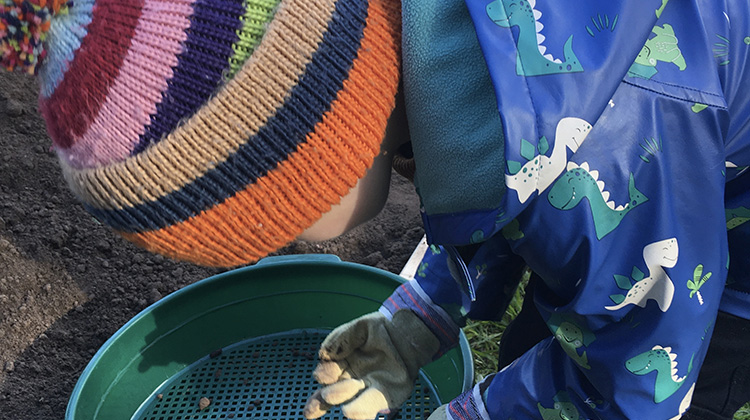Archaeology on Your Doorstep

Sitting atop Como Park with a view across the Yarra and Richmond in the distance, Como House will be a familiar landmark for anyone who’s been to Melbourne’s inner east.
But exactly how much history Como House has seen will be less familiar to most. The building itself is combination of Italianate and colonial architecture and was once home to the prominent Armytage family and the centre of Melbourne’s colonial high society. A visit gives an insight into the opulence of Melbourne in its heyday when riches from the gold rush and off the sheep’s back flowed freely.
The Victorian chapter of the National Trust has put together a school program exploring the city and its regions’ places of historical interest which gives students an opportunity to take a deep dive into Victorian history.
The program, Archaeology: Beyond the Written Record, introduces students to different ways of thinking about history. In the program, a trained archaeologist - the Dig Director - guides students to explore the ways that archaeologists use the everyday objects of the past; opening their eyes to how far we’ve come by reconstructing the past through the people and the landscapes in which they lived.
In the Como house program students excavate one of the simulated archaeology sites, survey a location adjacent to the site, and analyse artefacts they find. All while guided by their Dig Director. Students are guided to think critically about the data and artefacts they have collected, and to use these to draw conclusions about communities and landscapes of the past.
"The program addresses multiple aspects of the history, geography, and science learning areas in the Victorian Curriculum. This enables us to tailor the program to the students’ year level, and to teachers’ learning intentions. The Dig Director draws on their own extensive knowledge and tools to provide a learning experience that enriches and actively engages student learning.
“We’ve had very positive feedback on the program overall. Some comments we’ve gotten include how the program is a thrilling education day as it has ignited students’ curiosity and appreciation for history. The students really embrace the adventure and have the ability to form a deeper connection with the past. It’s truly an engaging experience is the feedback we get often,” says Nicola Dziadkiewicz, Education & Public Programs Manager at National Trust.
The National Trust is launching a new program at Barwon Grange. Similar to Como House, the Barwon Grange archaeology site provides learners with hands-on experience in excavation, surveying, and artefact analysis. Barwon Grange offers an added unique context as it was once considered a luxury riverside villa.
“While Barwon Grange is still standing for us to enjoy today, its neighbour Westbourne Villa, suffered irreparable fire damage in the 1960s. Westbourne Villa built in 1854, is now evident only as a raised grassed mound and was partially excavated under a community excavation program in 1997. NTV Education’s simulated archaeological site at Barwon Grange reflects the Westbourne Villa on the adjacent property, presenting a unique opportunity for students and teachers to get hands-on experience linked to a real archaeological site and to then tour a standing equivalent next door at Barwon Grange."
The program is Victorian based, and the National Trust has several programs suited to primary to Year 12 available.
Teachers can learn more about the Archaeology: Beyond the Written Record program at: https://www.nationaltrust.org.au/education-vic/